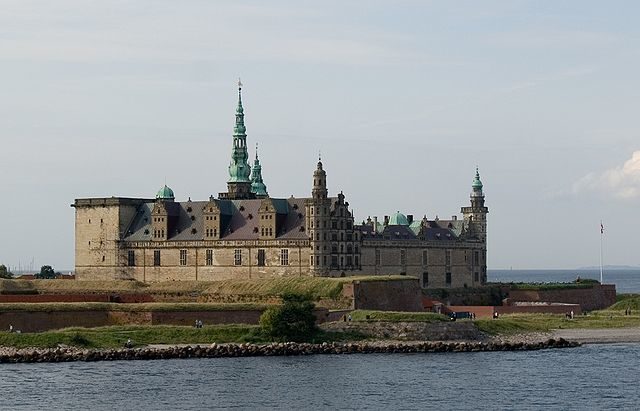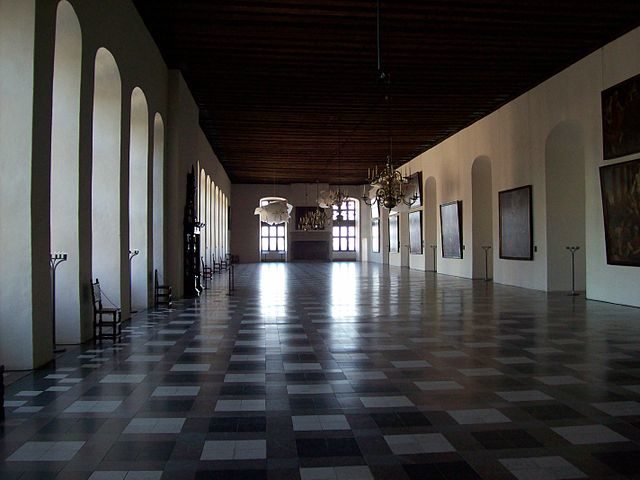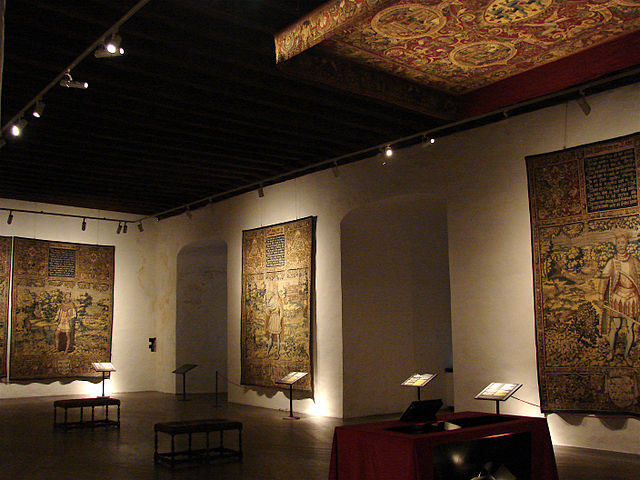Kronborg Castle is famous worldwide as Elsinore Castle, the setting for William Shakespeare’s play Hamlet. It is Denmark’s most visited castle. Elsinore is the English name for Helsingor, the town in Denmark where this outstanding castle is located. The royal castle of Kronborg at Helsingor is of a monumental importance to the Danish people and played a key role in the history of northern Europe from the 16th to the 18th century.
It is located on a strategically vital position on the extreme northeastern tip of the island of Zealand controlling the Sund, the stretch of water between Denmark and Sweden. Kronborg Castle has stood at Helsingor since 1420. It was built by King Eric VII as a stronghold. Back then, the fortress was known as Krogen (“the Hook”). Along with the fortress Karnan at Helsingborg in Sweden, on the opposite coast of the Sund, it commanded one of the few entrances to the Baltic Sea. Ships had to pay dues at Kronborg Castle if they wanted to enter or leave the Baltic Sea, making Helsingor one of the richest and most important towns in Europe. The two strongholds controlled all navigation through the Sund.


Because of the introduction of cannons into warfare, the rulers of Denmark had to modernize the castle. From 1574 to 1585, under the patronage of King Frederick II, the old medieval fortress was metamorphosed into a breathtaking Renaissance castle, unique in its appearance and size in Europe.
Spires, sculptures, paintings, towers, columns, and copper roofs were added to the castle. The sand for the exterior walls was brought from Sweden and, after the renovation, the castle acquired its current name of Kronborg (“Crown Castle”). The main engineers were the Flemish architects Hans Hendrick van Paesschen and Anthonis van Obbergen, and the sculptural work was coordinated by Gert van Groningen. The king was also a devoted patron of theater, and plays were often performed in the castle.

In 1629, the castle was burned down in a tragic accident. Only the chapel was spared because of the strength of its arches. King Cristian IV put a lot of energy and money in rebuilding the castle.
England is full of amazing manors and castles – below is drone footage of the Odiham castle – it’s beautiful!
The reconstruction was led by the architect Hans van Steenwinckel. The magnificent exterior was once again reconstructed. Although ceiling paintings and other decorations were made in the Baroque style, the interior never returned to its former beauty.
From 1658 to 1660, Kronborg was under Swedish occupation and a huge number of its precious works of art were stolen. The Swedish capture of the castle showed that Kronborg was vulnerable. A new series of ramparts were then built around it. After this, Kronborg was considered the strongest fortress in Europe.
From 1739 until the 1900s, Kronborg was used as a prison. From 1785 to 1922, the castle was under military administration. The army left the castle in 1923, and after complete renovation it was opened to the public in 1938.


The royal apartments, the Ballroom, the Little Hall, and the chapel represent the rich history of Denmark and Europe. Under the castle, there is a large network of crypts and catacombs. In the catacombs there is also a grandiose stone statue of the legendary Holger the Dane (Holger Dansk). Every summer, there are festivals dedicated to the work of William Shakespeare. In 2000, Kronborg Castle was designated a UNESCO World Heritage Site.
To be or not to be: that is the question for Kronborg Castle. After crumbling and decaying, and after rebuilding and renovating, the castle is like a phoenix reborn from its ashes. Kronborg Castle still stands proudly above human history and the thunderous sea of the Sund.
